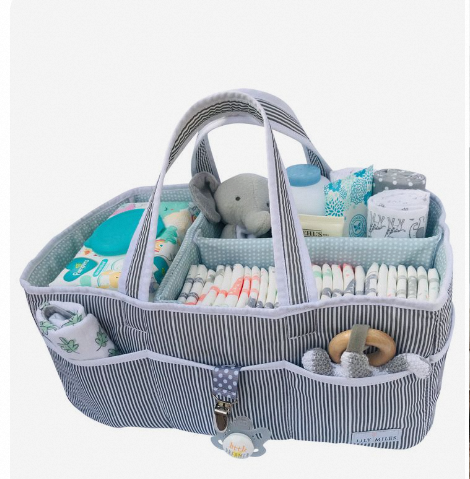Your Baby May Needs a Larger Diaper Size
New parenthood is a whirlwind of snuggles, learning curves, and, of course, diapers. But how do you know when your little one needs a size up? Fear not, new parents! This guide will equip you with the knowledge to decipher those diaper signals, ensuring happy bums and fewer blowouts.
Signs of a Tight Fit
Red Marks or Pressure Points:
- Look for red marks on your baby’s inner thighs, groin area, and around the waistline after removing the diaper. These areas are particularly sensitive to pressure.
- Picture: Include a picture of a baby with red marks from a tight diaper.
- Tip: Apply a barrier cream to prevent chafing if you notice mild redness. However, frequent red marks suggest a size up is needed.
Leaks and Blowouts:
- Leaks around the leg cuffs and blowouts at the back are strong indicators that the diaper is too small.
- Severity: Occasional leaks due to overfilling might happen, but frequent leaks or blowouts require a size up.
- Tip: Ensure the leg cuffs are snug but not digging in. Adjust the positioning of the diaper to avoid gaps at the back.
Difficulty Fastening
If you struggle to fasten the diaper securely without causing discomfort, it might mean the diaper is nearing its limit in terms of size. The tabs should fit comfortably without stretching excessively.
Diaper Waistband Positioning
Below Belly Button:
- Check where the diaper waistband sits on your baby. If it consistently falls below their belly button, even after adjusting the tabs, it’s likely they need a size up for better coverage.
- Tip: Choose a diaper with a higher rise to ensure it covers your baby’s tummy fully.
Riding Low:
- Observe how the diaper behaves during movement. Occasional sagging might not be a concern, but persistent sagging, bunching up between the legs, or significant gaps around the waist suggest the diaper is too small.
- Tip: Ensure the diaper is snug but not tight around the legs. Consider trying a different brand or size that offers better support.
- Growth spurt: If your baby is experiencing a growth spurt, these signs might appear temporarily even if the current size is technically correct. Monitor the situation and adjust the size if needed as they grow further.
Baby’s Growth and Development Of Suitable Diaper Size
Weight Gain
Monitor your baby’s weight closely. Many diapers come with weight ranges; once your little one reaches the upper limit of their current diaper size, it’s time to size up.
Mobility Milestones
As babies grow and become more active, crawling, rolling over, and eventually walking, they may need a larger diaper to accommodate increased mobility and prevent leaks from active movements.
Comfort and Sleep For Right Diaper Size
Restlessness During Sleep
Take note if your baby seems restless or wakes frequently during sleep periods. An overly tight diaper can cause irritation or discomfort, disrupting their rest.
Unusual Fussiness
Excessive fussiness or irritability during diaper changes can sometimes signal that the diaper is too small and uncomfortable for them.
Conclusion
In summary, understanding when to switch to a larger diaper size involves keen observation, regular monitoring of your baby’s growth, and paying attention to any physical signs of discomfort. By staying attuned to these cues, you’ll ensure that your baby stays comfortable and dry, promoting healthy development and happy moments throughout their diaper-wearing journey. Remember, always prioritize your baby’s comfort and well-being when assessing diaper fit, and don’t hesitate to try a bigger size if needed.

